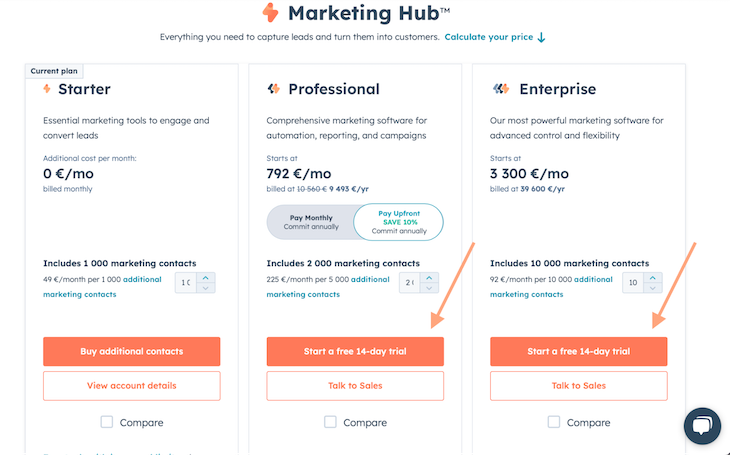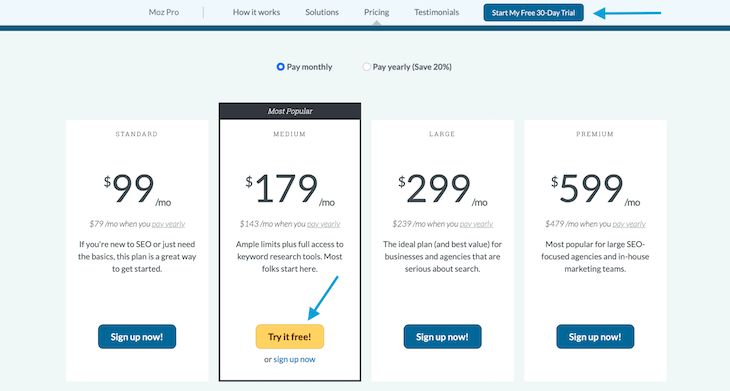
With the availability of ready-to-use tools, it has become easy for anyone to build a website, but not everyone can make it profitable. After all, when used effectively, a website can be your best salesperson. Your website serves as the first contact point with customers and determines whether or not they decide to make a purchase with you.
Without conversions, your business will fail to generate profit. This is where conversion rate optimization comes into play. You can use CRO to ensure that you approach your ecommerce thoughtfully.
In this article, you will learn what conversion rate optimization is, tools and best practices, and how to make your website generate more revenue.
Conversion rate refers to the percentage of website visitors or potential customers who take a desired action (account creations, downloads, or purchases etc.). Thus, conversion rate is a crucial metric that measures the effectiveness of the website in converting its visitors into customers.
To calculate conversion rate, divide the number of conversions by the total number of visitors, and then multiply the result by 100 to get a rate.
For example, if a website counts 1000 visitors/month and 10 of them buy a product, the conversion rate would be:
CR = (10/1000)*10 = 1 percent
Conversion rate optimization is the process of improving the performance of a website, landing page, or app by increasing the percentage of visitors who take a desired action, such as making a purchase, filling out a form, subscribing, contacting your sales team, or any other action.
For example, if a page has a conversion rate of 2 percent and receives 1,000 visitors a month, then the page will generate 20 conversions per month.
If you improve the conversion rate to 4 percent by optimizing different elements on your website, the number of conversions will double to 40 conversions per month.
Successfully utilizing conversion rate optimization allows you to:
Overall, CRO can help your business achieve its goals with less effort than new traffic acquisition, whether it’s increasing sales, improving engagement, or building brand loyalty.
CRO leads to a better user experience. Let’s break down the fundamental points of CRO that will provide a better UX for your visitors:
Focus on a user-friendly design.The visual design of your website or landing page can have a significant impact on conversion rates, so it’s important to know what works best for your visitors in terms of design.
The more time your visitors spend analyzing how your website behaves, the less time they will spend on your content.
While moving from one page to another, your visitors shouldn’t feel like they are on a different website. Visitors also rely on consistent wording to know where they’ve been, and what areas to explore next. Also, the images used must explain the content of the website.
Consistency pays off! Once visitors learn how your website works, they will be able to focus on your content.
Sixty-five percent potential buyers begin their shopping journey on a mobile phone. Having a website that isn’t optimized for mobile will hurt your organic search because Google prefers mobile-friendly websites.
If your website doesn’t support mobile, all your visitors who come from mobile will abandon your website the second they land on it and they will not return. Now imagine if 53 percent of your customers come from mobile devices, this means that if you have 10,000 visitors per month, you have just lost 5,300 potential customers.
The content used on a website or landing page also has a significant impact on conversion rate, so it’s important to keep in mind these few rules about content:
Don’t underestimate the power of a call to action and its placement. When customized CTAs are used, brands see a 42 percent boost in conversions.
Make sure your CTAs:
Also, make sure they redirect the user to the right page.
Forms are often the primary way of gathering information from visitors and converting them into leads or customers.
The design and usefulness of a form determines a visitor’s chances of completing it and eventually converting. Thus, optimizing forms can help increase the conversion rate of your website.
You can achieve this by:
Ninety-four percent of web traffic is generated through SEO. So what does this mean for your conversion rate? Strong SEO directs customers to your website, you just need to convert them into clients.
Let’s imagine, your website is selling a B2B lead generation product. It’s better for you to rank first in specific keywords such as “lead generation tools” or “best lead generation tools.”
If you target general keywords such as “lead generation,” you will probably only get visitors who are looking for information about lead generation such as definitions instead of wanting to buy your tool.
By focusing a little bit of your efforts on organic search, you can make sure visitors coming to your website are targeted and you offer what they want.
Conversions don’t happen by chance. However, you below are basic steps to follow when optimizing your conversion rate:
What do you want your users to do on your website? Whether it’s a purchase, form fill, or any other desired action on your website, defining your conversion goals will help you focus your efforts and better measure your strategy’s success.
The conversion goal will differ depending on your industry. Make sure to set matching goals with your business industry and type.
Here are some examples of goals you can set:
Understanding user behavior on your website is crucial for conversion rate optimization. To achieve this, you can use a combination of analytics tools.
Google Analytics is a popular choice, providing valuable data on website traffic, visitor demographics, page views, time spent on your site, bounce rate, and conversion rates. It also offers advanced features like custom reports, segmentation, goal setting, and tracking.
However, Google Analytics can’t show you the qualitative aspects of user behavior — the “why” behind the actions users take on your site. This is where LogRocket comes in. LogRocket is a frontend application monitoring solution that allows you to replay problems as if they happened in your own browser. Instead of guessing why errors happen, or why users struggle to use your site, LogRocket lets you see exactly what happened.
LogRocket provides session replay, performance monitoring, and robust product analytics. It records clicks, mouse movements, scrolls, and keystrokes, and replays the entire session for you. This helps you understand user frustration, observe user behavior, and uncover problems in your UI.
Ultimately, LogRocket helps you optimize your website’s user experience based on real user activity and feedback. You can gain a more comprehensive understanding of your audience, optimize your user experience, and measure your product’s effectiveness more accurately.
Collect qualitative data from your website visitors through surveys, feedback forms, and user testing to gain insights into their needs, preferences, and pain points.
First of all, to form a hypothesis you need to be able to justify why you came up with it and what you want to do with it. Based on your data and research, develop a hypothesis about what changes you can make to your website or landing pages to improve conversion rates.
Testing your CRO hypothesis is a sensitive part of the process because marketing and product decisions are mainly made based on the test results. Your results must be statistically significant to be actionable.
Split and A/B testing are the most popular forms of testing.
A/B testing is used by 58 percent of marketers making it the most preferred and common method to know which variation performs better in terms of conversion rates.
With A/B testing, you choose two versions (A and B) of an element (image, CTA, headline, links) and simultaneously test them in a tool that gives you the numbers in real time. At the end of the test, you keep the version that increases your conversion rate the most.
Analyze the data from your tests to determine which variation performs better and use that knowledge to make further improvements to your website.
Customer behavior, trends, and demands change fast. Continuously monitor your website’s performance, collect feedback from users, and test different variations to improve your conversion rates over time.
Now that you know the basics of CRO, here are some real-life examples of how companies utilized CRO best practices:
Booking.com implemented a number of strategies to improve their conversion rate, including simplifying the booking process, optimizing their mobile experience (mobile price only), and personalizing their website based on user data.
One particularly effective strategy was their use of urgency and scarcity tactics to encourage travelers to book. For example, they displayed messages such as, “Only 1 room left at this price on our site,” “89 other people are looking at this hotel right now,” or even “Limited supply in this city for your dates, 127 accommodations like this are already unavailable on our site.”
This created a sense of urgency in customers’ minds, which motivated them to make a booking before they missed out.
These optimization strategies resulted in a 15 percent increase in conversions for Booking.com, which translated to millions of dollars in additional revenue:

The HubSpot team identified a high bounce rate on their pricing page, indicating that visitors were not signing up to any plans. They conducted A/B testing to determine the most effective pricing page design.
One of the changes they made was to add a “Start a free 14-day trial” button on their pricing page that led users to a free trial. This button was placed prominently on the page and was designed to encourage users to take action. They also removed some unnecessary details from the pricing page, creating a cleaner and more focused design.
These changes resulted in a 21 percent increase in conversions and a 24 percent increase in free trial sign-ups. As a result, HubSpot was able to generate more leads and increase revenue:

Moz’s team identified a high bounce rate on their pricing page, indicating that users were not converting to paying customers. To address this, they conducted A/B testing to determine the most effective pricing page design.
After several rounds of testing, they found that a simple and clean design with clear pricing for each company size, a comparison of options and two prominent free trial call-to-action buttons resulted in a 50 percent increase in conversions. This optimization strategy not only improved their conversion rate, but also increased revenue for the company:

These success stories with conversion rate optimization demonstrate the importance of understanding user behavior and preferences. They are also an excellent example of how data-driven testing and optimization can help businesses achieve their goals and improve the user experience.
To make it easier for you to know where you are at in your website optimization, I have prepared a full checklist document for you.
To use this CRO checklist, select File > Make a copy from the menu above the document.
The list can be completed by any further elements you see meaningful for your company.
The following are the most frequently asked questions regarding conversion rate optimization:
A high conversion rate indicates that a website is successful in persuading its visitors to take the desired action, which can lead to increased revenue and profits for the business.
It also indicates that the website is providing exactly what the target audience is looking for.
This can help to build trust and credibility with visitors, which can lead to increased brand loyalty and repeat business over time.
On the other hand, a low conversion rate can indicate that there are issues with your website (design, features, UX overall or other) that are preventing visitors from taking the desired action.
Testing is pointless if you want to finish it very quickly. Patience is key!
What really matters is the statistical significance of the results, not the duration of the test.
Test for at least one week, but two weeks is an ideal duration. However, if your product/service is complex and requires a long buying journey, the testing duration could go up to one month or more.
CRO best practices are good to know, but don’t follow them blindly. After all, CRO is all about understanding your visitors and your persona.
The best practices are generally actions/strategies that have worked for other websites or work for the majority of them. There’s no way of knowing if they will work for you until you test how your visitors react to them.
You should:
The goal of conversion rate optimization is to help you maximize the value of your traffic without having to get new visitors to your website.
Focusing on bringing new traffic is generally more costly and requires more effort from your teams. In that sense, if your budget is tied, CRO is the ideal way to make more sales with less effort and money.
However, as stated above, your traffic should be enough to conduct a significant CRO testing. Traffic under 5,000 visitors per month will not give trustworthy results. In this case, increasing your traffic should be your priority, not CRO.
As you move towards implementing CRO strategies within your team, make sure to remember these five things:
Lastly, try this small exercise that might open your eyes to things you may have not noticed before. Go to Google, search for two to three of your competitors who offer the exact same product as you, click on their website real quick, and try to follow their sales funnel. Then return to your own website and be honest with yourself answering these questions:
Your customers follow that same process that you just did. Once you make sure you take action on the steps and advice in this article, you will notice a significant increase in your website’s engagement rate and conversion rate will follow.
LogRocket identifies friction points in the user experience so you can make informed decisions about product and design changes that must happen to hit your goals.
With LogRocket, you can understand the scope of the issues affecting your product and prioritize the changes that need to be made. LogRocket simplifies workflows by allowing Engineering, Product, UX, and Design teams to work from the same data as you, eliminating any confusion about what needs to be done.
Get your teams on the same page — try LogRocket today.

Guard your focus, not just your time. Learn tactics to protect attention, cut noise, and do deep work that actually moves the roadmap.

Rumana Hafesjee talks about the evolving role of the product executive in today’s “great hesitation,” explores reinventing yourself as a leader, the benefits of fractional leadership, and more.

Trey Courtney talks about his process for evaluating partnerships or acquisitions and how he successfully implements these initiatives.

Asma Syeda shares the importance of responsible AI and best practices for companies to ensure their AI technology remains ethical.